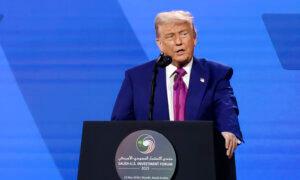Syria’s post-Assad regime has given independent armed factions 10 days to merge with the state-run security apparatus or face punitive measures, according to Syrian Defense Minister Murhaf Abu Qasra.
In a statement released on the evening of May 17, Abu Qasra said Syrian “military units” had been successfully merged into a “unified institutional framework” subject to government control.
However, Abu Qasra went on to stress “the need for the remaining small military groups to join the ministry within a maximum period of ten days ... in order to complete the efforts of unification and organization.”
Abu Qasra’s statement did not specify which factions the ultimatum referred to.
It did not appear to be aimed at the Syrian Democratic Forces (SDF), a Kurdish-led armed group backed by Washington that now controls much of the country’s northeast.
In March, the SDF signed a deal with Damascus to incorporate its fighters into the state security apparatus, and for SDF-held territory and institutions to be placed under the control of Damascus.
At the time, U.S. Secretary of State Marco Rubio hailed the deal, reaffirming Washington’s support for a “political transition [in post-Assad Syria] that demonstrates credible, non-sectarian governance as the best path to avoid further conflict.”
On May 15, however, neighboring Turkey, which views the SDF as a terrorist group, said the terms of the deal between the group and Damascus had yet to be implemented.
“We expect these steps to be put into practice,” Turkish Foreign Minister Hakan Fidan said on May 15 after meeting both Rubio and his Syrian counterpart in Turkey’s southern Antalya Province.
Ongoing Violence
The regime of Syrian leader Bashar al-Assad was toppled last December by a rebel offensive led by Hezb Tahrir al-Sham (HTS), an armed Sunni group formerly linked to the al-Qaeda terrorist group.Since then, Syria’s new HTS-led government has sought to consolidate its authority and bring the country’s disparate armed factions under state control.
Shortly after the regime’s collapse, Sunni militant groups that had opposed Assad—including HTS—agreed to be merged into the state security apparatus.

Syria remains home to a host of armed factions that continue to operate independently, with some supporting the new government and others opposing it.
In March, Sunni militants in the coastal Latakia Province killed hundreds of members of Syria’s Alawite community, a religious minority from which the long-ruling Assad family hailed.
In April, scores were killed in southern Syria after fighting erupted between Sunni militants and armed members of the country’s minority Druze community.
On May 17, Syrian security forces raided sites linked to the ISIS terrorist group in the city of Aleppo, during which three ISIS terrorists were killed, according to Syrian authorities.
The defense ministry said one member of the security apparatus was also killed during the raids, while another four ISIS terrorists were detained.
As of publication time, the perpetrators of the attack were still unknown.
During a landmark visit to Saudi Arabia on May 13–14, U.S. President Donald Trump met HTS chief Ahmed al-Sharaa, Syria’s interim leader.
After the meeting, Trump announced that longstanding U.S. sanctions on Syria, which had originally been imposed against the Assad regime, would be lifted.
Syrian Interior Minister Anas Khattab said the move would help efforts to “consolidate security and stability and promote civil peace in Syria and the region.”







